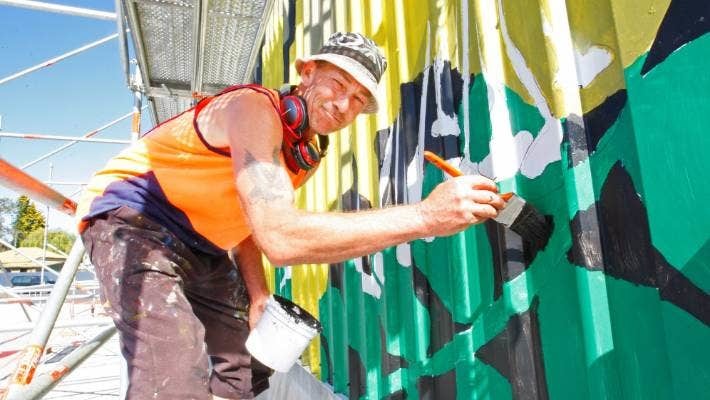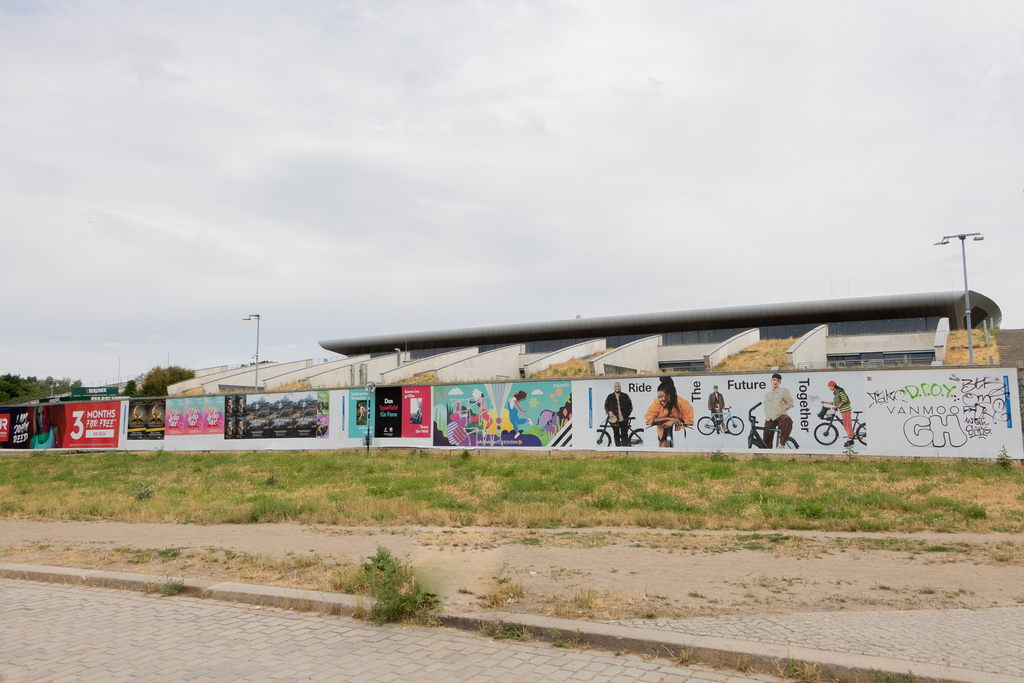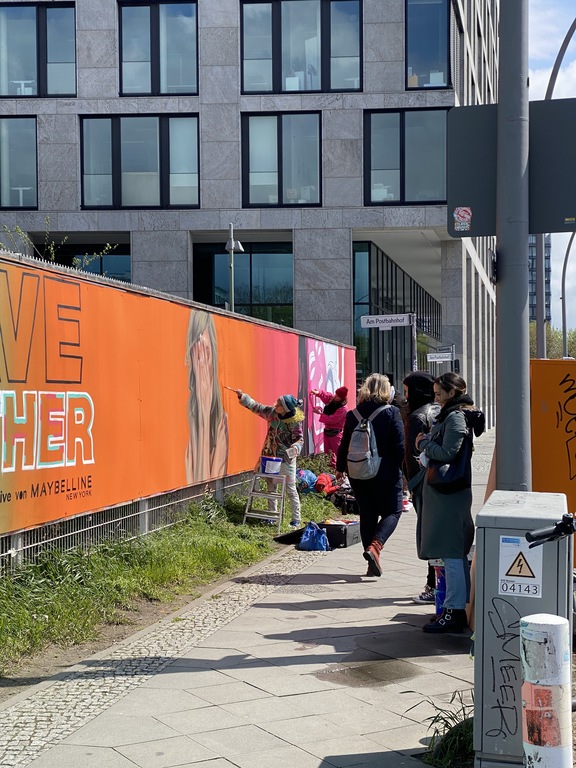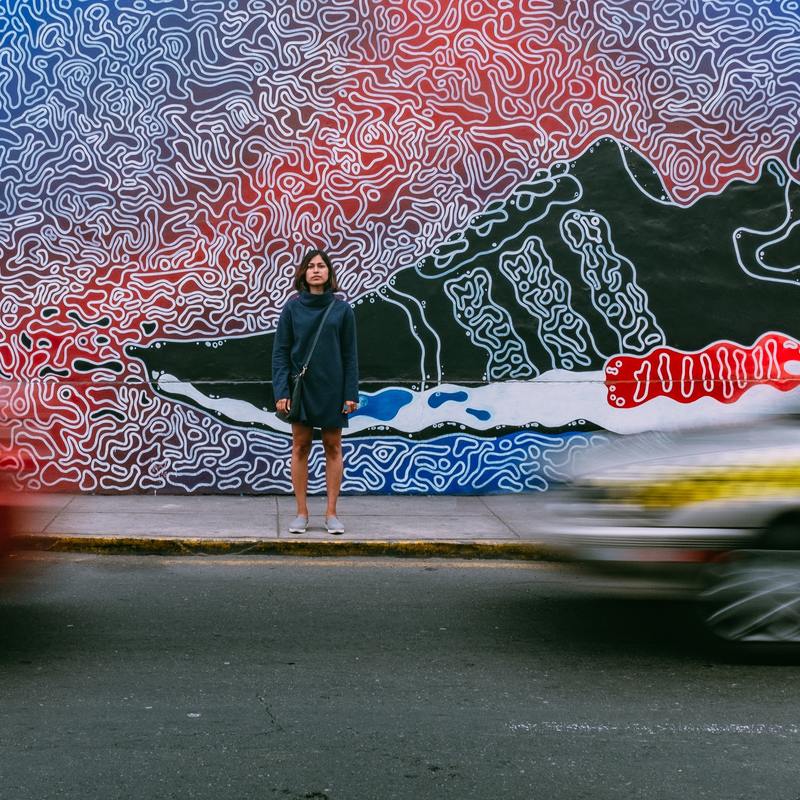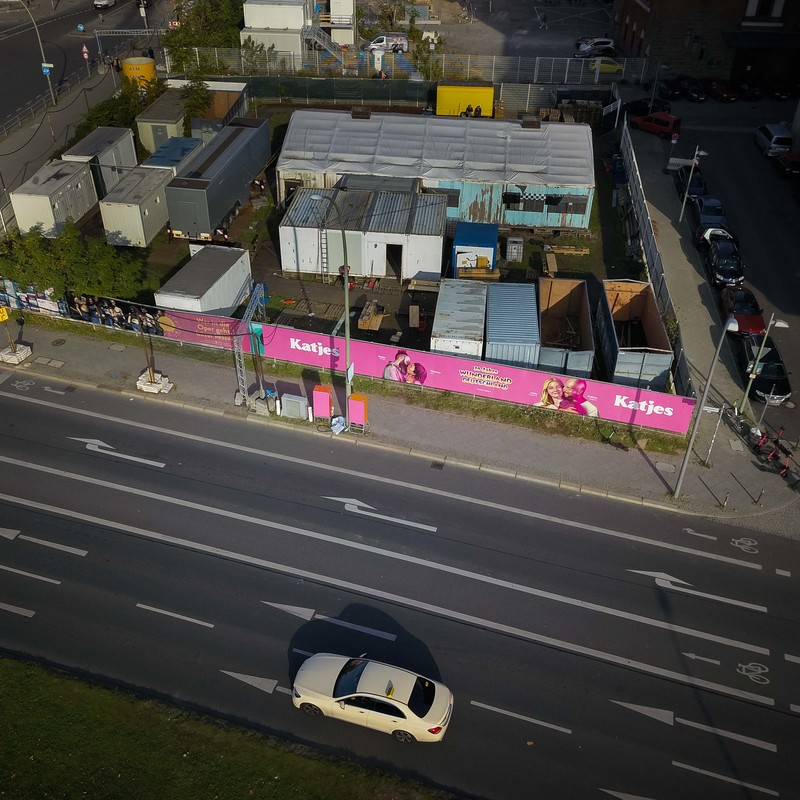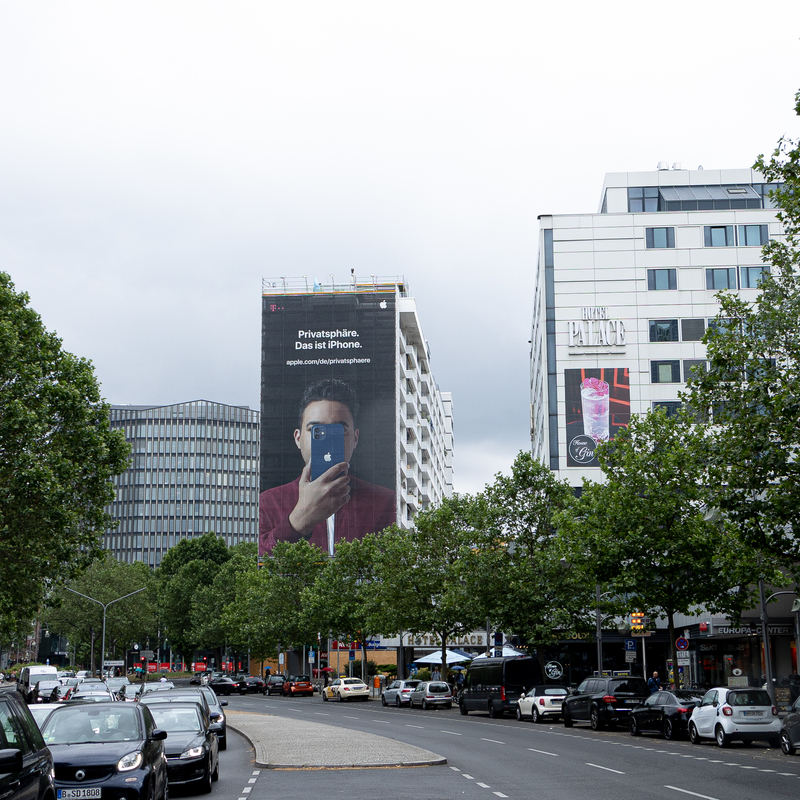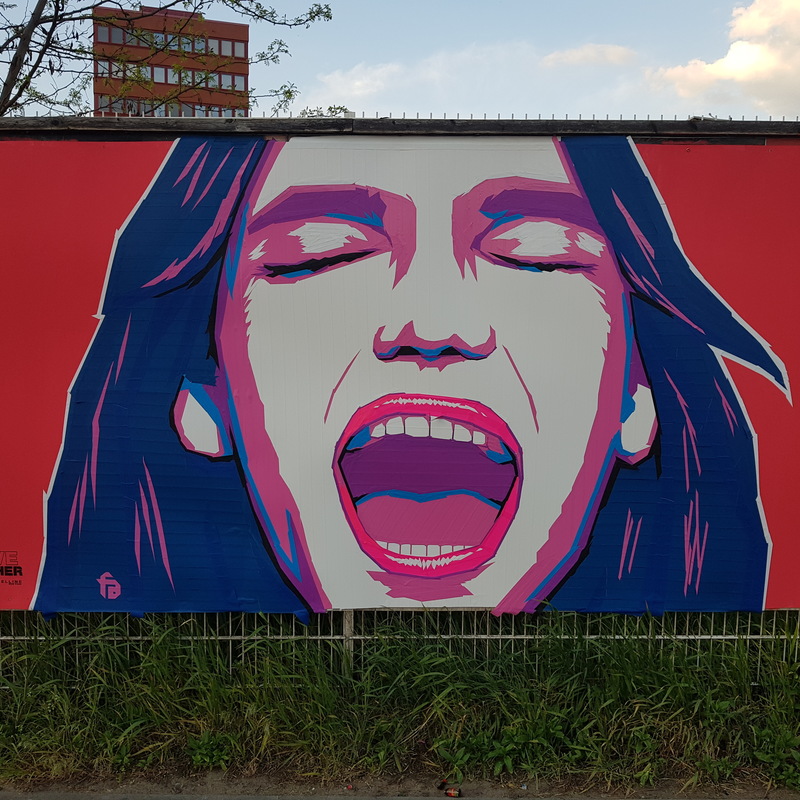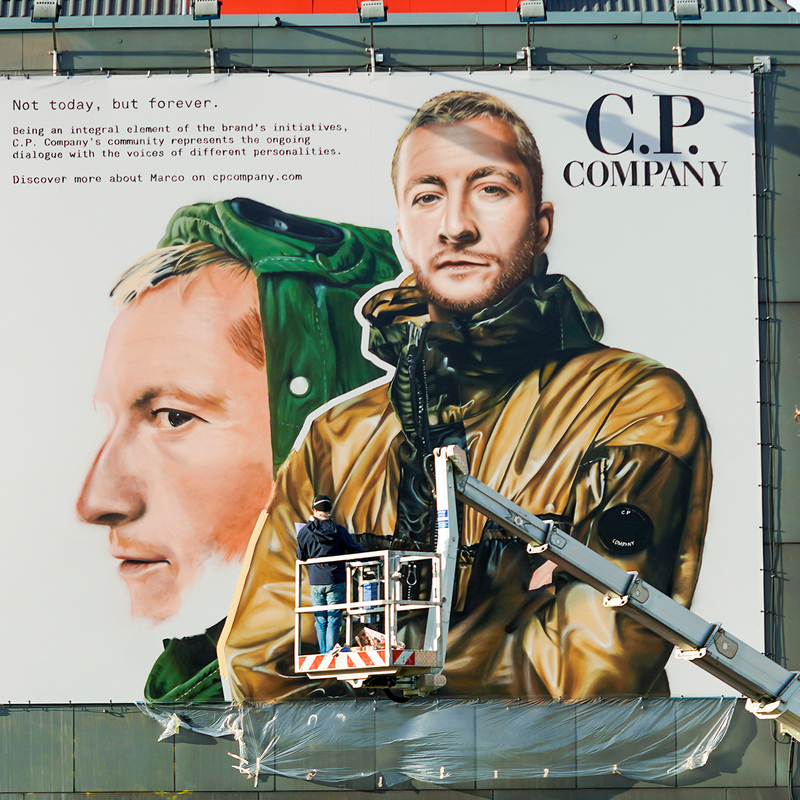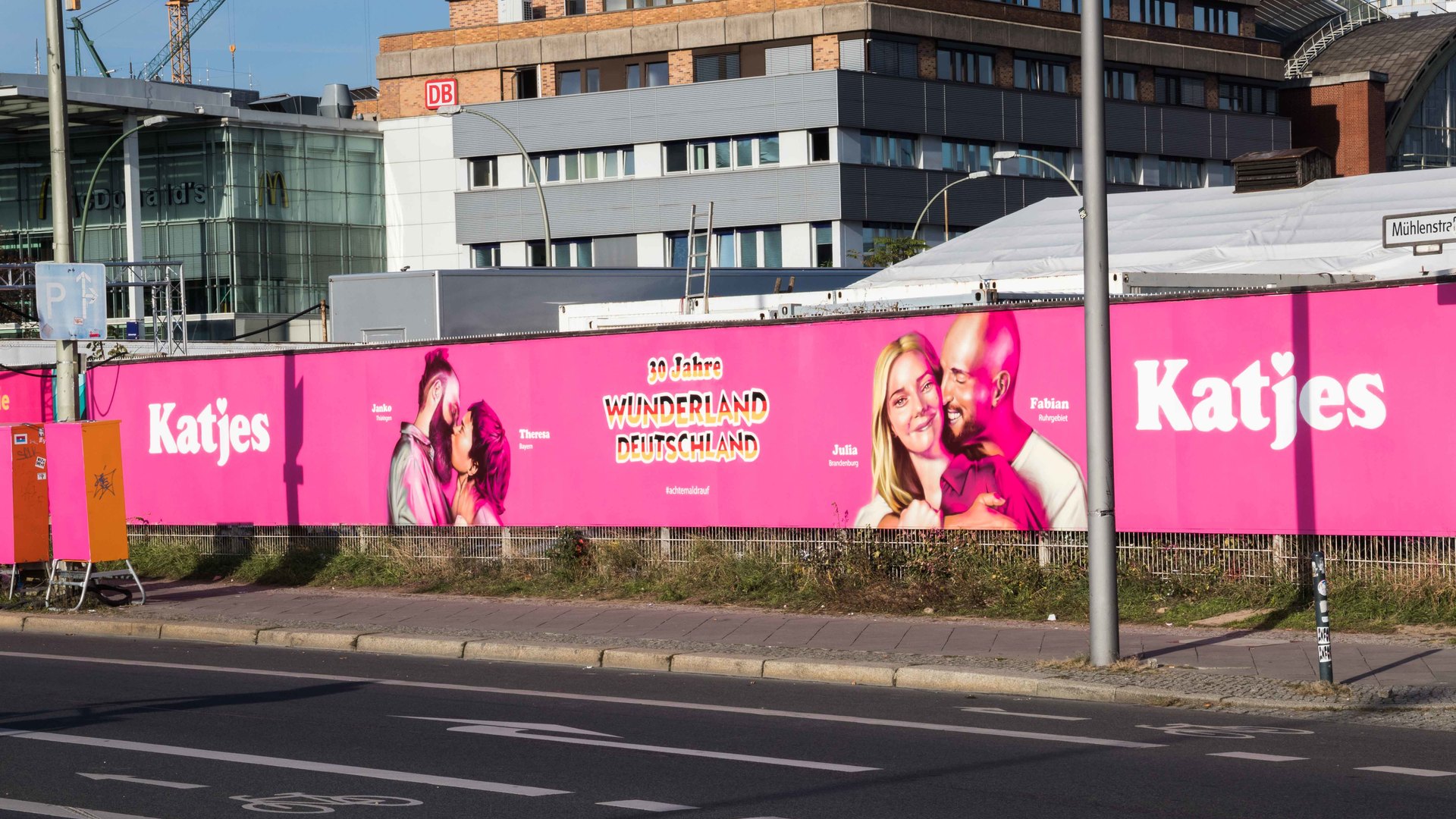
From rags to riches: The process and costs of mural advertising
The benefits of linking street art to advertising are undeniable, but is it worth it financially? Small companies and less-known brands tend to be hesitant about mural advertising – unfamiliar with the process or concerned that the costs of implementing mural advertising may be too high. As a consequence, mural advertising is most popular with established companies, such as popular streaming services, telecom companies and famous lifestyle luxury brands, who at first seem to be the only ones who can afford this type of promotion.
By presenting the process and the general mural advertising costs such as location, size, concept and materials, we’ll show you why advertising on murals can be a great alternative for a company looking for something more meaningful than a billboard, no matter their size.
The process and its costs
The first step in the process of developing a mural is choosing its location. The busier the location, the higher the visibility of the mural, translating into higher rental costs. The location is usually decided with the client’s product and target audience in mind.
The size of the wall also has a direct impact on the cost of the mural, as prices are often calculated per square meter. Eye-level walls that are not, for example, building facades tend to be cheaper as there are not as many square meters involved, and therefore less material and equipment is required.
At Basa Studio, we have a portfolio of walls and building facades that our clients can choose from. This portfolio speeds up the entire bureaucratic process, as we don’t have to reach out to a new landlord and propose a deal every time a client contacts us for a project. Choosing a wall that is already in our portfolio could reduce the production time by half.
Based on our experience, we usually give a project a time frame of 60 days if the wall is not in our portfolio. So if you choose a wall from our portfolio, our time frame is reduced to around 30 days.
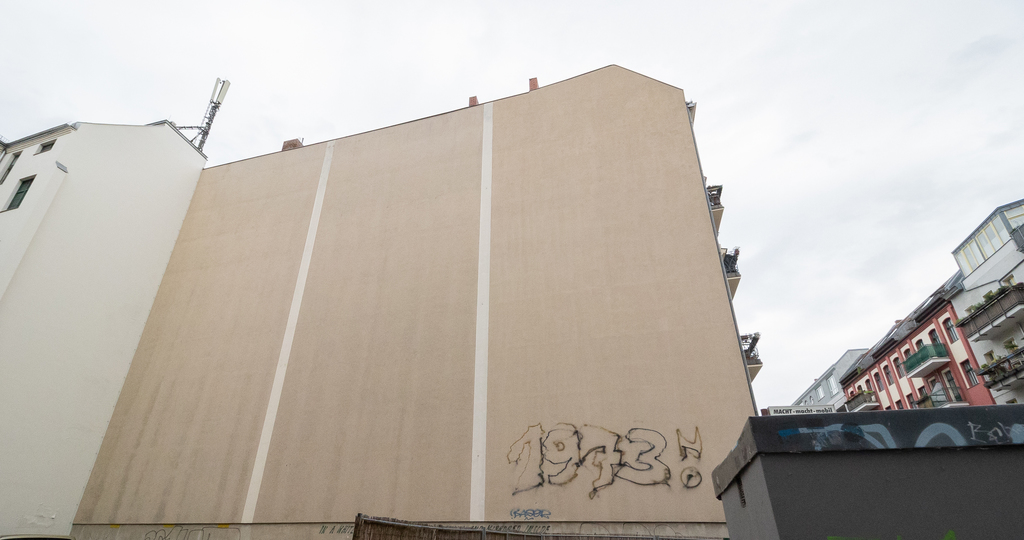
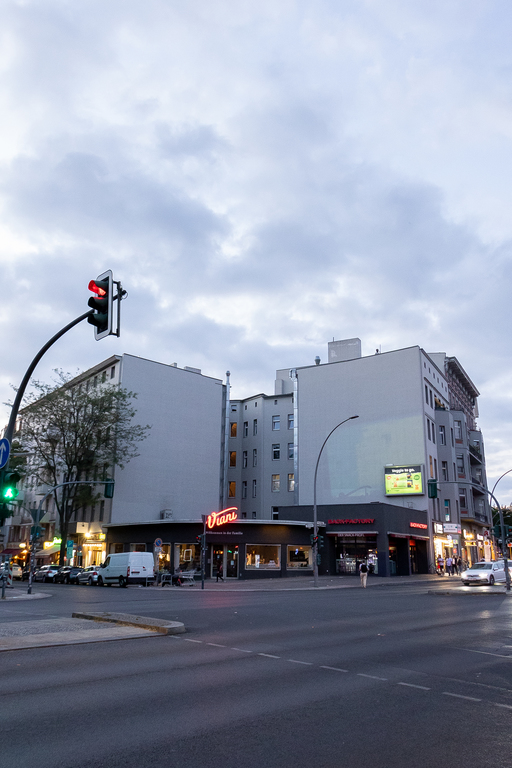
Although a building’s landlord is allowed to do whatever they please with the facade, the legal aspect of this kind of advertising can be tricky because it lies in a grey area between art and advertising. Once permission from the landlord or owner of the location is secured, we can move on to the next step of creating your mural: developing a concept. Some clients may come with specific key visuals that have been pre-planned by a third agency in the chain. However, this takes away a lot of the creative freedom from the artist or artists involved in the project. When clients already have a fully developed concept, this reduces the role of our amazing artists to one of mere technique, disregarding their creativity and lessening the end result. Our advice: artistic freedom gives you more impressive, authentic and compelling works.
See more on how brands like Ikea, the UN, and Dove have found the right collaborations with mural artists for their advertising campaigns.

The concept and design of the mural has a direct influence on the cost of the project. A more abstract design with simple shapes tends to be easier and faster to manufacture than a hyperrealistic image that is very detailed and more time-consuming, for example. In terms of specific costs, in most major European capitals like Berlin, Amsterdam, London and Paris it is possible to commission graffiti advertising works starting at 100€ per square meter. These costs can also be based on the technique and time that it will take the artist/s to create the mural. The client’s choice of artist may also impact the cost of production, considering that working with well-known artists tends to be more costly.
After a few feedback rounds where both the artist and the client get to discuss the concept for the mural, it’s time to begin the implementation phase. It’s important to note that the landlord or owner of the wall which will showcase the work also needs to approve the design – they may not favour murals that are very political or provocative.
Basa Studio, together with the artist, takes care of all the material and equipment necessary to safely create and implement the mural. The expenses necessary to cover this part of the process are dependent on the other factors mentioned above: the concept and the wall itself. A larger wall requires more resources and heavier equipment such as scaffolding and lifts, while a smaller wall may not need such elaborate gear.

Once all of these varying factors have been settled, we are ready to begin implementation. It is vital to mention that the involvement of a studio like Basa’s is crucial to the success of a mural. When we’re dealing with a large project that involves many different people and partners, it can be difficult to coordinate and resolve challenges that suddenly appear. An agency will ensure that everyone’s interests and expectations are being met transparently.
In short, the average mural advertising costs of a whole production from beginning to end can vary a lot – starting somewhere between 60,000 € and 80,000 € for a wall covering 100-150 square meters. That price would be for a project that doesn’t require any extra features such as light installations or other similar additions. On the other end, graffiti advertising murals on eye-level walls of around 30 square meters can usually be realized with a budget between 10,000 € and 15,000 €.
Eye-level walls/fences:
Learn more about the collab between Maybelline and 4 female street artists for their Berlin campaign "Breaking Taboos with Maybelline.
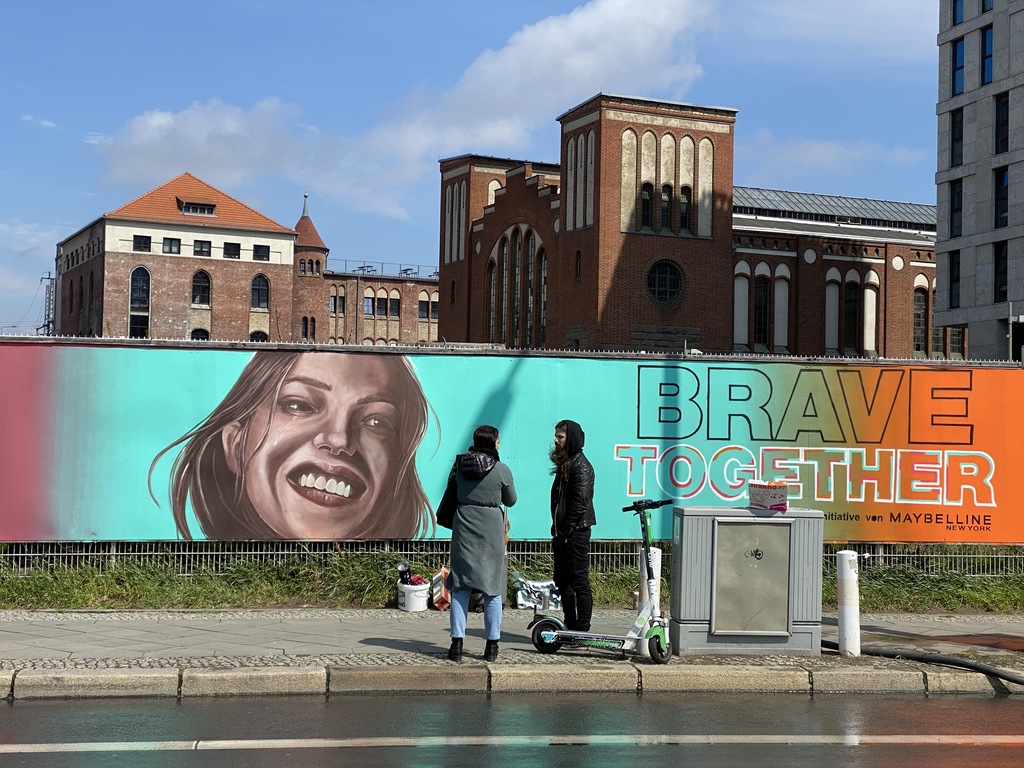
Large walls above 100 square meters:
High vs. low mural advertising costs
In order to help you visualize and better understand the uniqueness of each project, we’ll present two examples that make the difference in mural advertising costs clearer. Katjes are the third-largest confectionery company in Germany, popular for their licorice and fruit gums, and they decided to highlight one campaign with an extensive hand-painted mural. Despite being at a coveted location near the historic East Side Gallery in Berlin, which is also a symbol and synonym for street art, this mural serves as an example of a project that’s not so costly, as it did not require heavy machinery such as lifts or cherry pickers for its implementation.
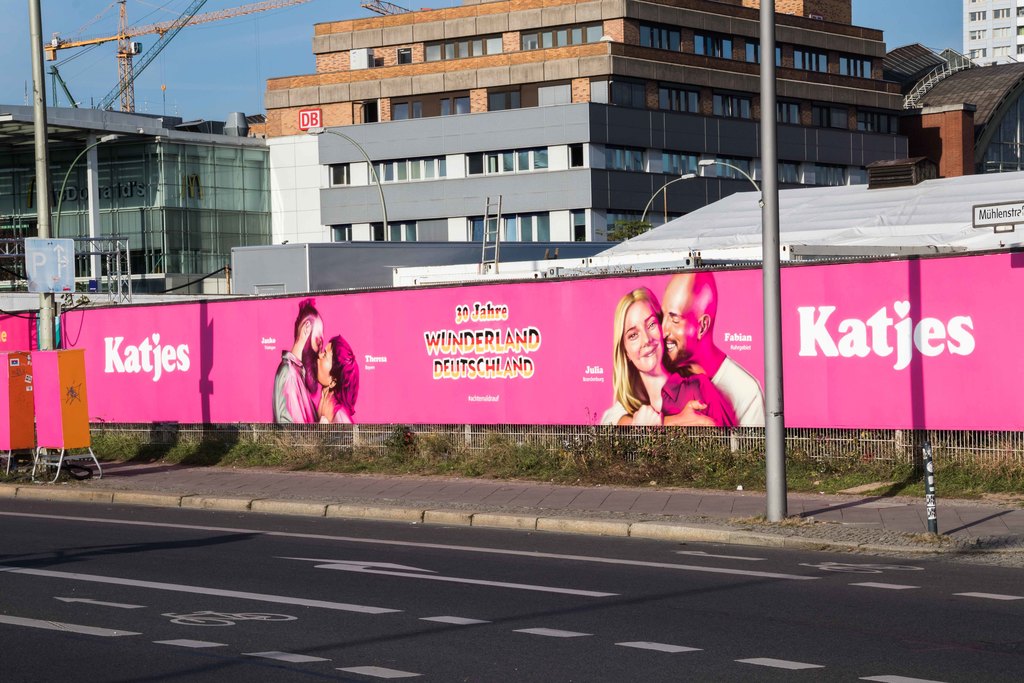
In contrast to Katjes’ campaign, our PlayStation mural in Cologne, Germany, is an example of a project with higher mural advertising costs. With a more elaborate design and wall than Katjes’ eye-level mural, PlayStation were promoting the release of a new SpiderMan video game with a mural that required a more detailed technique and a longer time frame to be manufactured, as well as more intricate equipment due to its huge canvas: the side of a building.

Murals or billboards?
At first, a billboard campaign can seem more financially beneficial than mural advertising, as most agencies that provide this service offer packages where you have to book multiple billboards. However, it’s hard to compare these two types of advertising as they don’t necessarily fit into the same category. Due to their size and visibility, murals are showstoppers, and they are usually the highlight of a campaign, meaning that a mural’s goals differ from those of a billboard. Murals simply serve a different purpose due to their creative nature and organic impact - see 4 of the best street art advertising campaigns.
Mural advertisements are artworks, and when they’re carefully made with eco-friendly materials, they can be considerably less damaging to the environment than paper- and ink-based posters. They’re also a greener choice than electronic billboards using non-sustainable materials, as these can have a negative impact on the environment through many hours of LED lighting.
When considering billboards and murals, it’s also important to think about the longer lifespan of mural advertising. Digitally, your billboard space will probably be shared with other companies. This may seem to decrease the costs of a campaign, but in the long run, a mural will attract unique attention, and will live on via social media and the audience’s mind for a lot longer than a poster or digital billboard. According to Statista, the price for simply renting a space in a digital billboard in Germany can be as high as 115 € per day, which can seem a lot considering its shorter effectiveness. You can also expand the lifespan and outreach of a mural advertising campaign by having a “making of” video revealing its production process online.
It’s also key to mention that features can be booked alongside a hand-painted mural to amp up its appeal. From augmented reality to video mapping and light installations, artists can blend their creativity with technology to strengthen designs and concepts – making a mural stand out even more from regular billboard or poster advertising, and last even longer in the minds of those viewing it. Read more about the benefits of graffiti mural advertising.

With mural advertising, promotion and social media spread begins as soon as the first brush meets the wall, leaving passers-by intrigued by what’s about to come. Depending on the project, the mural advertising costs can be roughly as low as 10,000 € or as high as 80,000 € for a typical commission without any special supplements. The location, size of the wall, choice of artist and concept, selection of materials, and necessary equipment are all factors that alter the mural advertising costs. In return, you’re getting a live painting session which will capture the interest of those living in and passing through the area, and a unique artwork connected to your brand.
If your goal is to merely advertise a product, perhaps mural advertising is not for you. But if you aim to go beyond promotion by supporting local art scenes, spreading a sustainable message, and developing an authentic and creative brand image, then mural advertising is the way to go.
Related creative stories
Browse through other features, interviews and guides to discover creative brand collaborations, meet innovative artists and creators, find out how new artforms are energizing advertising, & more.
Send us your briefing
We're excited to hear from you! If you're looking for artistic solutions for your next creative marketing campaign, send us your briefing. We can also help create a killer concept if you're in an early ideation phase. Check out our services for more.

